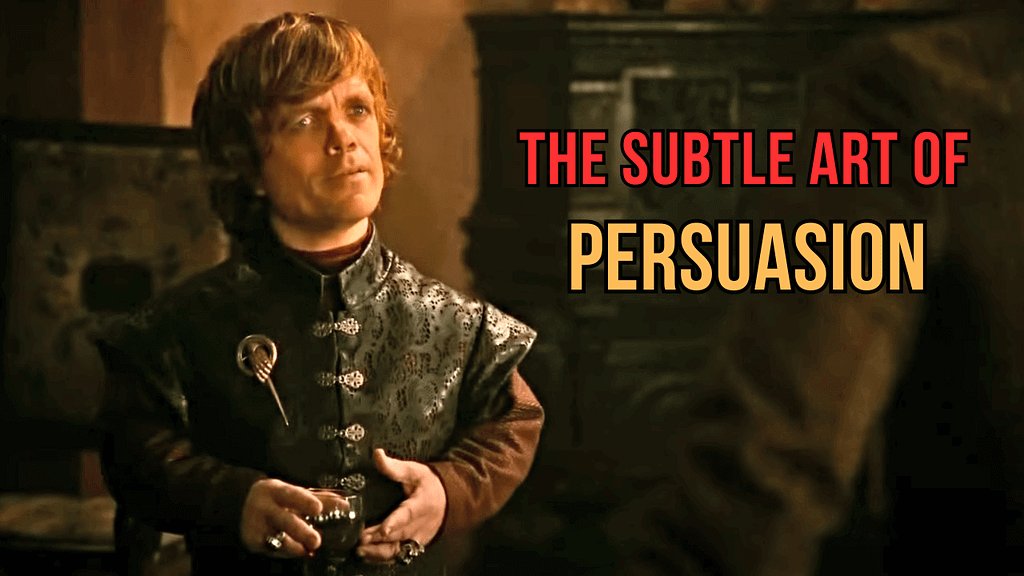Last Updated on November, 2023 by Edison
A problem that has been crawling in my mind for a long time is how can I take my persuasion skills to the next level and then how I can teach you the same in my channel.
The “aha moment” came when I remembered a strategy called reasoning from first principles.
It’s when you break something down to the basic truths, then you build up from there.
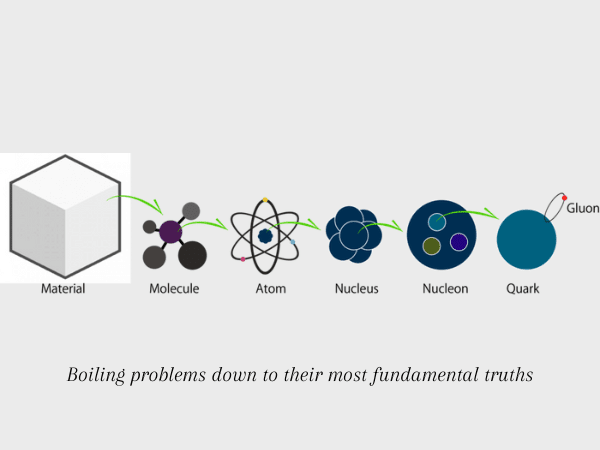
This approach helps you think differently because you are not limited by the old ways of doing things. You are trying to come up with something new.
So, I started with…
What are the fundamental parts of persuasion?
Eventually, I broke the process down into three core steps:
- Understanding Their Worldview
- Entering Their Worldview
- Changing a Part of Their Worldview
Then I looked for the best strategies we can use in each step.
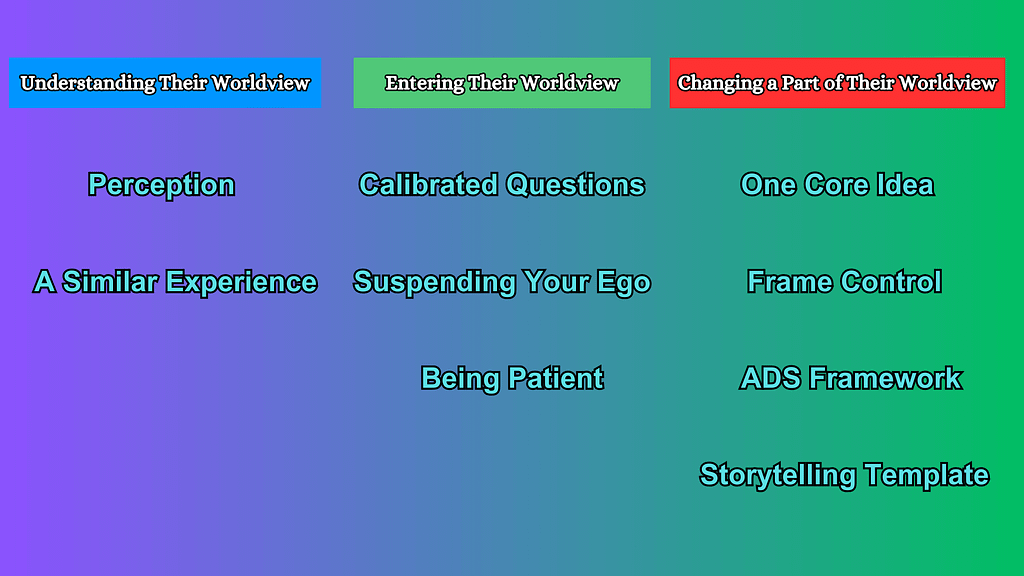
Just like in my last guide, these lessons are universal. You can apply them in daily interactions, marketing, or selling.
But here I focus on daily interactions because there’s less information about that.
My goal is to give you more valuable information than you would get from buying multiple Udemy courses.
Perception
You can use any persuasion tactic you want, but you will fail unless you truly understand people. You need to know what moves that person and tailor your approach to him/her.
When you do this, everything starts falling into place.
You come up with compelling ideas and arguments, you become more enthusiastic, persistent, empathetic, and consequently more persuasive.
So let’s continue with how they perceive the world.
Imagine this:
You spend most of your time with people who think like you. And you consume content that aligns with your beliefs.
Naturally, you start to believe that your views are generally accepted by others and that they are correct.
The truth is that your views are not universal and might not even be correct.
Let me explain:
Our brain does not work like a camera, capturing reality as it is.
Our brain is more like a storyteller, taking pieces of information from here and there, and constructing a narrative.
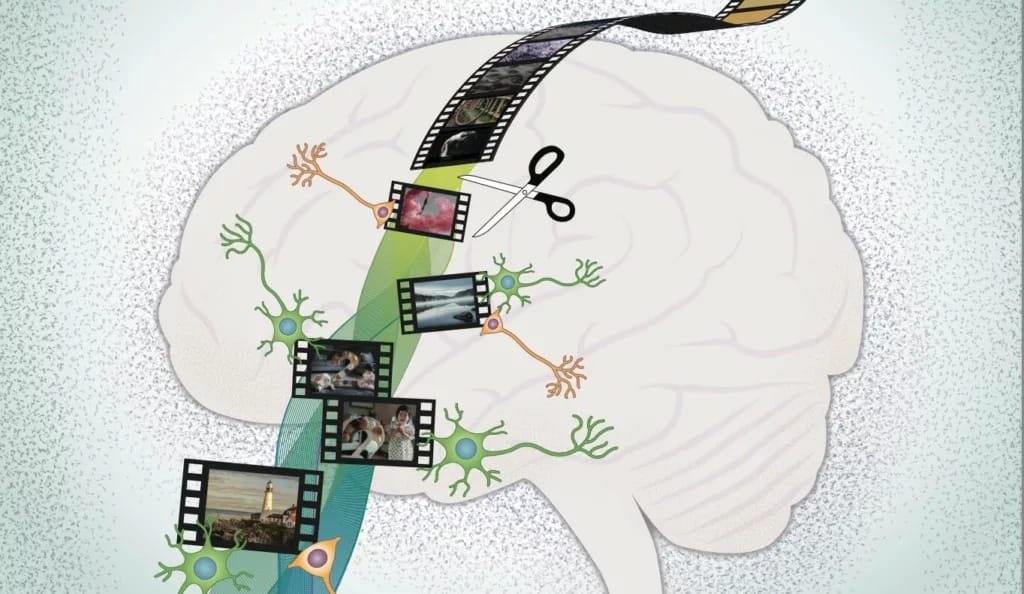
So perception is not reality. It’s a representation of reality.
Alright, there are 6 primary elements that influence our perception…
#1 Information we get from the senses
In social situations, most information comes from reading their body language. We try to figure out how they feel about us or if they’re telling the truth. But again, it’s just perception. And our perception might be wrong.
For example, when we notice someone finding it difficult to keep eye contact, we may assume he’s lying, but he might just be shy.
Or if a new colleague greets you with a warm handshake and a smile, you’ll probably assume they’re friendly. But they might be a highly manipulative person.
This doesn’t mean we should burn all body language books. But we shouldn’t be overconfident in our ability to read people because there are a lot of variables at play.
#2 Past experiences
Our feelings from past interactions can have a great influence on how we approach new people.
If we meet someone who reminds us of another person with whom we had a negative experience, we tend to assume they share similar traits.
What’s more interesting is that TIME ITSELF does not change our perception.
A negative experience from 20 years ago can still influence us today if we haven’t dealt with it.
Contrary to common belief, time does not heal you.
Unless you work on your issues, those negative experiences will continue to affect your perception even if you are not aware of their influence.
#3 Stereotypes
These are quick judgments we make about people based on the culture we are raised.
Now, PR experts and politicians try to understand the fundamental instincts of their target audience and create stereotypes based on that information.
Then, the media popularizes those messages.
As a result, each person has wrong perceptions that trigger negative feelings about a particular group because of the stereotypes we embraced while growing up.
If you’re curious, these are the instincts and the corresponding emotions.
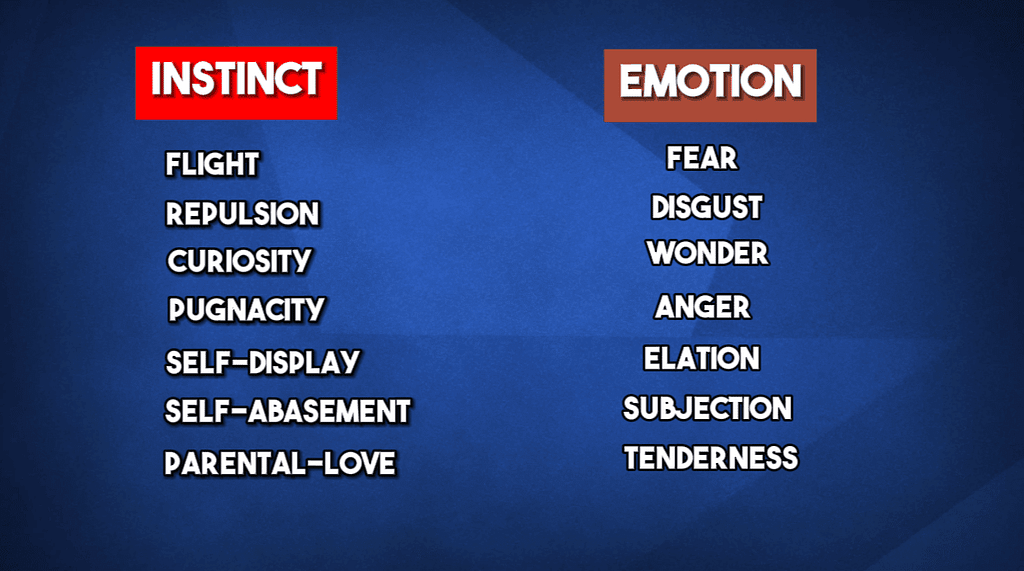
#4 Symbols
Symbols are a visual representation of ideas or groups.
But it’s not just logos and banners. There are also automatic phrases that trigger strong feelings.
Like stereotypes, symbols are a shortcut to thinking. You can notice when people respond to complex issues with automatic phrases.
In this case, ask them politely, with a curious tone of voice, about what they mean. And keep asking questions until they get stuck, but always be respectful. A good example is Jordan Klepper’s interviews.
#5 Rationalizations
It’s when we justify conflicting information about someone’s behavior.
For example, your friend is always late, and you rationalize his behavior that he’s very busy when he probably doesn’t value your time.
We also rationalize our self-defeating behavior. And when others point out our flaws, we might resent them and close off.
Keep that in mind when trying to help someone break a bad habit. You’ll always face many rationalizations.

#6 Then we have Dreams, Goals, and Fantasies
You can frame your message in a way that aligns with their aspirations. Especially when you tap into those hidden desires. Things that they do not openly acknowledge.
The bottom line is that perception is not reality. And we all have different perceptions of the world.
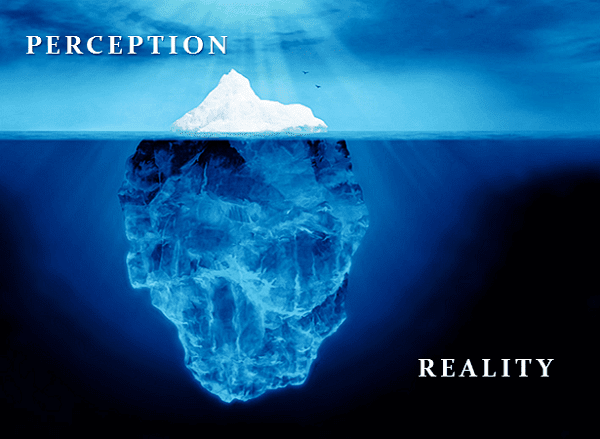
By staying open-minded, paying attention, and asking thoughtful questions, we can understand their values and beliefs and customize our approach based on that information.
If you want to learn how to get information from anyone, check out this video – How to Find Out Anything About Anyone
One Core Idea
When we try to persuade people, we throw many arguments at them, hoping one will stick and change their mind.
However, this approach is not effective. Because you’re not considering their worldview, and you are overloading them with information.
Plus, it can be frustrating when they don’t understand or misinterpret your words.
A better way is to find ONE CORE idea that appeals to their emotions and logic.
If the idea is complicated, provide a brief context and get straight to the point. You can also use metaphors, analogies, or stories to make it easier for them to understand.
Now, this idea should have two essential qualities:
First, it should make sense to the person. It doesn’t have to be entirely accurate, but it must sound like it is.
Second, it should give you a rush. The one you get when learning something new.
It should make them think, “I didn’t consider it that way,” or “I can’t wait to share this with someone.”
Frame Control
Frame is how we perceive a certain situation
Frame Control is how they perceive that situation
The person with the strongest frame will set the tone of the conversation, while the other will play by their rules and accept their decisions with minimal pushback.
You can recognize you have a weaker frame when the conversation is not going your way.
So, we pay close attention to their words and the frame they have established.
And we need to ensure that our frame is stronger than theirs.
Now, there are three major frames we need to encounter:
- The power frame
- Time frame
- Analyst frame
The Power Frame
You will encounter people who have a big ego. They approach interactions with an “I’m more important than you” attitude.
They expect you to value their opinions and feelings more than your own.
And to not question them.
Of course, they will persist in maintaining this dynamic… into holding the power frame.
However, this is also their weakness. Since they expect you to stay in line like the rest of the people, you can destroy their frame by simply defying them.
When you do that, you will feel uncomfortable. But you must understand that what you’re feeling is normal; it’s your primitive brain at play.
We all have heard the expression, ‘Don’t let them push your buttons’ but what if there are no buttons to be pushed? In the video below, I explain in detail why we get upset and how we can manage ourselves and ultimately outsmart even the most toxic people.
Just focus on maintaining your frame.
Focusing on your goal will help you keep your composure despite how you’re feeling inside.
Now, I don’t mean that you should be offensive. Bursting their frame can be subtle. You can even use humor to lighten the mood.
The Time Frame
The time frame is a variant of the power frame and basically states that their time is much more valuable than yours. They reinforce the perception of high status.
For example, in a business setting, someone might say, “Let’s finish this meeting quickly. I only have 20 minutes.”
I might say, Thank you for your time. I know you’re very busy, so I’ll try to make the presentation quickly.
This automatically lowers my status in that situation and sends the message that my time is not as valuable as his.
It also presents him as a prize to be won.
When, in fact, we want to convey the opposite. That our time is also valuable, that he better not waste it, and that what we offer can help him solve his painful problem.
Always enter the situation with the mindset that you have something valuable to offer and that you don’t need them; they need you.
Now, we can burst this frame by simply setting another time constraint.
He might say, I only have 15 minutes. And I say, “That’s okay, I only have 12,” smiling but being serious.
Keep in mind that the person who can set the time constraint has a higher status in that situation.
The Analyst Frame
When you are giving a presentation or having a conversation, some people interrupt you and drill into the nitty-gritty details of the issue.
They don’t see the bigger picture.
The problem is that the situation can spiral out of control, and you start talking about something that vaguely matters.
So we say something like: “Look the details are important, but are not critical to what we are trying to achieve. And we can verify all of that later. However, right now. We need to focus on whether we are a good fit. Should we be doing business together?”
If you want to learn more about framing and persuasion, I highly recommend reading Pitch Anything by Oren Klaff
Less is More
Many people have a great message to share, but instead of presenting it clearly and persuasively, they add many unnecessary details.
That message is buried in a rumble of words.

We want to do the opposite. We share our ideas in a way that makes people pay attention and take action.
Better yet, we want our ideas to become their comforting beliefs.
To achieve this, we need to be concise. We need to choose our sentences for maximum emotional and logical impact.
Something that can help you a lot is writing down your experiences.
In the last chapter, I’ll give you a powerful storytelling framework that you can use. So you can turn your life stories or even other people’s stories into well-crafted persuasion tools.
Another helpful thing is that when you think of compelling ideas or arguments, make a note on your phone or computer.
I have found that I come up with good ideas or solutions when I go for a walk or exercise in the gym.
Now, why do we talk too much?
One reason is thinking that persuasion is about dominating the conversation.
Another reason is that there’s a lack of action.
Because if you have experienced what they are going through or something similar, you become pragmatic. You focus on details that really matter.
This leads us to the next strategy…
Consider a Similar Experience
By connecting their situation with your experience, you can notice the intricate details of the problem, which allows you to enter their world.
Here’s the deal:
If you’re trying to help someone change, it may seem like your situations are very different.
But if we follow the First Principle approach we can realize that we go through similar steps or phases:
We take actions that make us feel better, especially in a time of crisis.
We pay selective attention to information that explains our behavior in a logical way.
In this age, gaining knowledge is relatively easy. The downside is that it’s much easier to find incorrect information and deceive ourselves.
Then, we rationalize our actions.
We socialize with people who share similar views.
Eventually, we convince ourselves that those views are correct, and that’s how a belief is born.
Then something eventful happens that shakes this belief… someone might persuade you to see things differently or you experience so much pain that you say WTF am I doing? And you decide to get rid of this belief.

Interestingly, many people might not use that event to change. They might use it as a way to double down on this belief.
Now, let’s take an example to better understand the steps.
Imagine a close person is addicted to TikTok, and you want them to use it less, then quit it entirely.

You might tell them that TikTok is designed to amplify your fears, make your thinking rigid, and a dozen bad things.
But would it change their behavior? Probably Not. They might dismiss it as nonsense.
So, what can you do?
First, think about a similar experience in your own life. Maybe you weren’t addicted to TikTok but had a different addiction, like sugar.
Your experience might have looked like this:
You used sugary foods and drinks to cope with stress.
You justified it by telling yourself it’s not a big deal and it makes you feel better.
You used rationalizations like “I’ve got it under control,” “It helps me feel better,” “I can quit whenever I want,” “It’s not a big deal,” and “Why don’t you mind your own business.”
Over time, you became self-conscious, and whenever you consumed sugar, you thought others were judging you for your lack of self-restraint.
You start to resent people who point out the obvious – that you’re damaging your health.
Eventually, you get tired of this situation and decide to overcome it.
So, we draw on our own experience to understand what they’re going through and grasp the details of their situation.
If we begin the conversation by telling them that their behavior is harming them, they’ll become defensive and close off.
So we start with an indirect approach. We ask them calibrated questions with a curious tone of voice about TikTok.
Questions like,
How does TikTok work?
Why do people seem so addicted to it?
Is there an option to track your time on the app?
I read an article saying TikTok can reduce attention span; do you think that’s true?
These questions can help raise awareness of the risks of using TikTok.
We must be patient. It took us time to become aware, break the rationalizations, and ultimately make the decision to change, right?
It’s the same thing with others… People go through certain steps or phases before they decide to change.
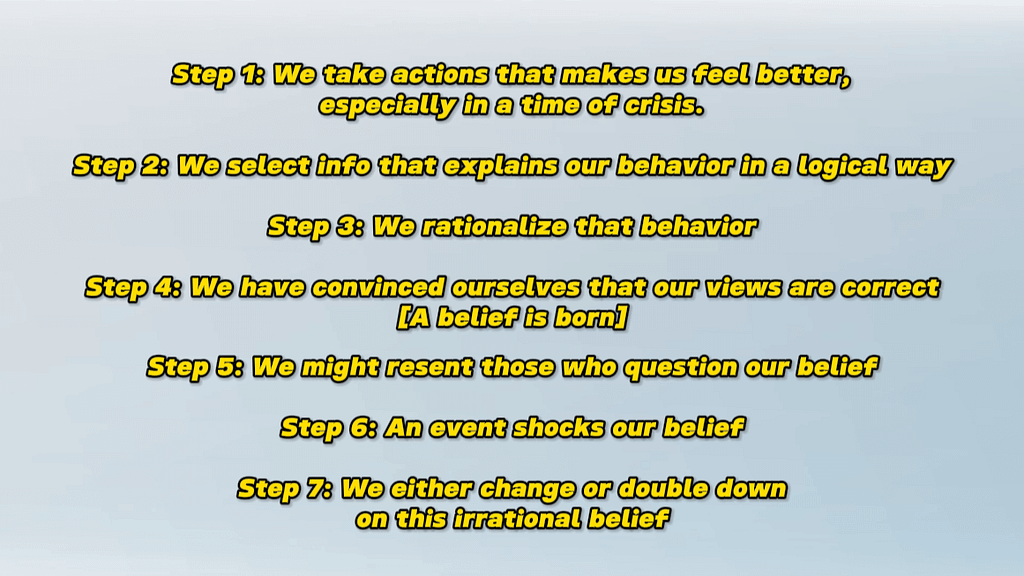
Look, you need to see the situation from a 10,000-foot view and guide them in the right direction.
A framework that can help you do that is…
Awereness-Decision-Strategy
Sometimes, people are not aware of the real problem. They get busy with less important details or are in denial about the problem.
Or they might know they have a problem but haven’t decided to change yet.
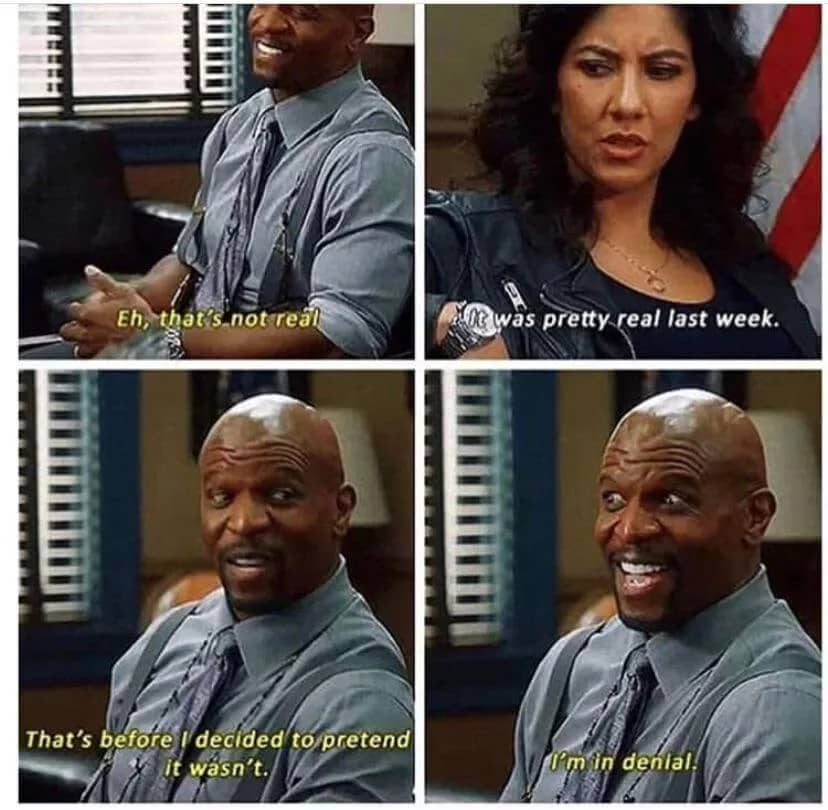
Then, there’s the chance of having little to no trust in your approach. They doubt it works or that you are able to help them change despite your good intentions.
When you face resistance like this, it’s easy to get frustrated.
And you might say things that break rapport or even the relationship with them.
So, we use the ADS framework to understand where they are right now and tailor our message based on that information.
The first phase is AWARENESS – We make them aware of the problem and how much is costing them – You can frame it based on what has more impact. It is costing them in terms of money, health, or relationships with their loved ones.
The second phase is DECISION – Based on what we have learned about them, we present a compelling idea that is designed to guide them into making a decision.
Here, you must be patient to break their rationalizations with logical and emotional arguments.
They build a wall; you tear it down. They build another wall; you tear it down again and again.
For example, they might call me annoying. And I say: “Imagine that I want to cross a bridge. But you know it’s a faulty bridge, and I will 100% fall down the river and get hurt. The problem is that I insist on crossing it.
Now, would you do whatever it takes to stop me from crossing that bridge?
Of course, I would.
Well, that’s what I’m trying to do. I’m trying to protect you from getting hurt. I know I can be annoying sometimes, but I’m only doing this because scientific studies have shown that using TikTok for a long time can harm your mental health.
Remember what we said earlier: your frame is competing with their frame.
They framed you as annoying, but then you frame yourself as someone trying to protect them.
The next phase is having a STRATEGY on what to do next – There’s a concept in politics that says, “Don’t break a system unless you have a replacement in place.”
It suggests that it’s not enough to criticize or destroy a current way of doing things; you also need to come up with an alternative way.
Otherwise, the situation might become chaotic.
So, once you convince them to change, you present a step-by-step plan on how they can change. And make sure they stick to the plan.
Changing a Part of Their Worldview
We want to change a part of their worldview that benefits both of you.
Don’t try to change their entire mentality because it’s a monumental task no matter who they are.
Be strategic about where you spend your energy.
And, their thinking might be all over the place, but focus on the root of the problem… don’t deal with leaves.
Always look at the bigger picture. Don’t get discouraged if you hit a roadblock. Change your argument, frame it differently, or pick it up later once you have a clear mind.
You know, there are always options. There’s no need to lose your patience.
This reminds me of a quote from the show Suits.
Harvey Specter: What are your choices when someone puts a gun to your head?
Mike Ross: What are you talking about? You do what they say or they shoot you.
Harvey Specter: Wrong. You take the gun, or you pull out a bigger one. Or, you call their bluff. Or, you do any one of a hundred and forty-six other things
In addition, sometimes you need to be tough on them. Not to offend them but to slap reality in their face, even if it means to raise your voice.
Because they are in a state as if they are hypnotized. They mindlessly engage in the same behavior.
So you need to do something that shakes them out of this state and look at reality as it is.
Now, let’s move on to the final strategy:
Storytelling
A story can help you convey your idea more effectively.
Now, the story should have a hero (who represents your listener) and a problem he is trying to overcome.
Don’t give them too much context or a backstory; just jump right into the action and show how they solved the problem.
This will capture their interest, and they will want to believe your idea.
But keep in mind that the more exciting your idea, the more evidence you need to back it up.
So, to make your idea credible and easy to understand… use facts, specific details, quotes from experts, analogies, or metaphors.
Lastly, tell them precisely what to do next and why that action makes sense.

